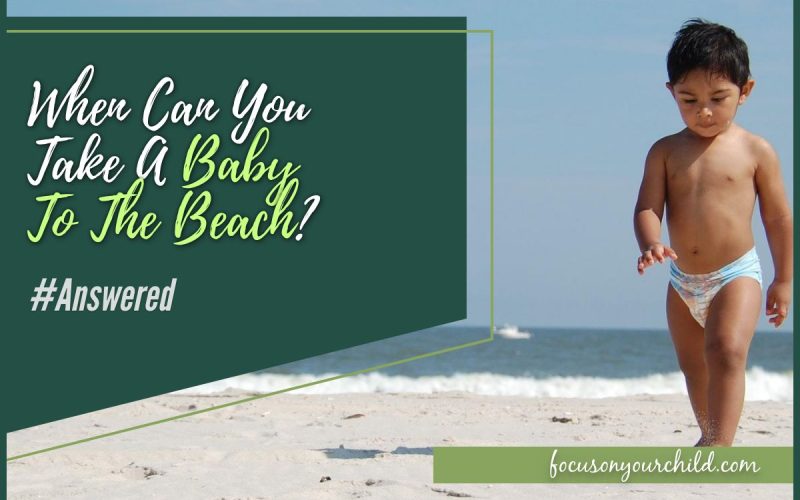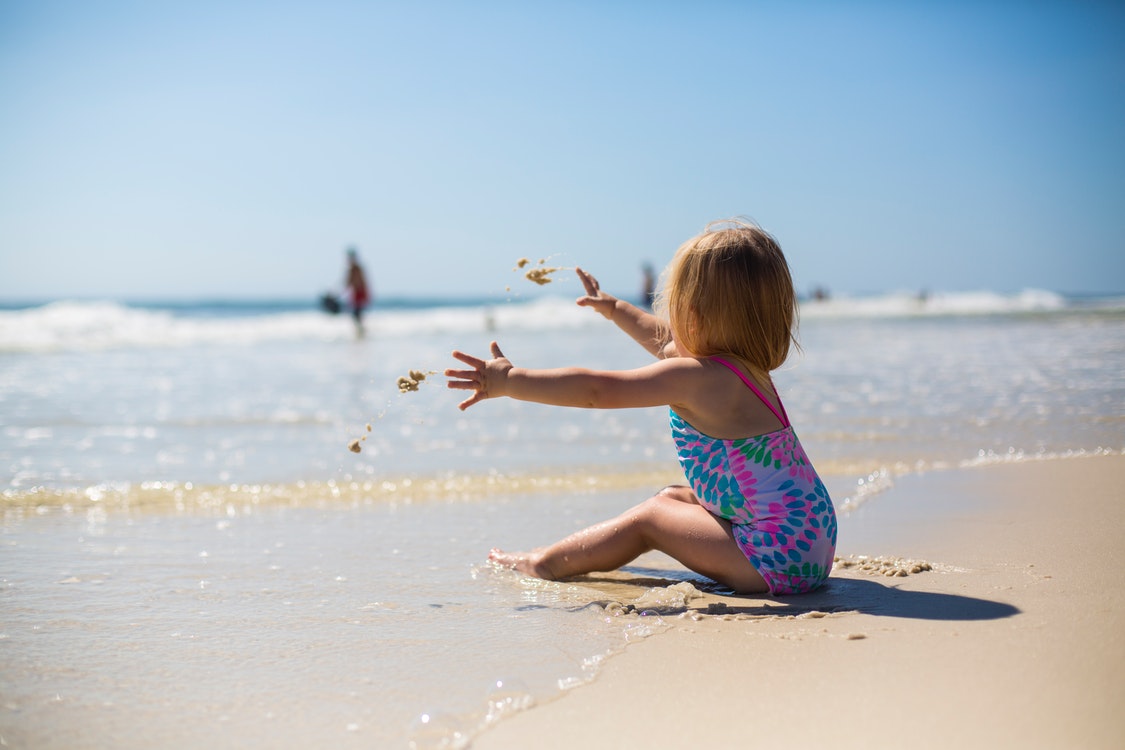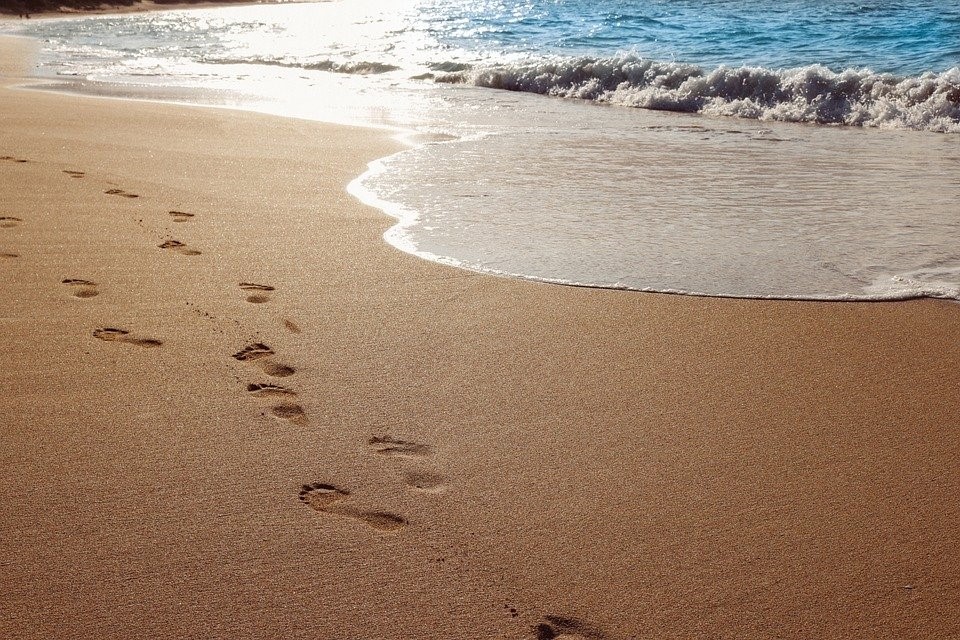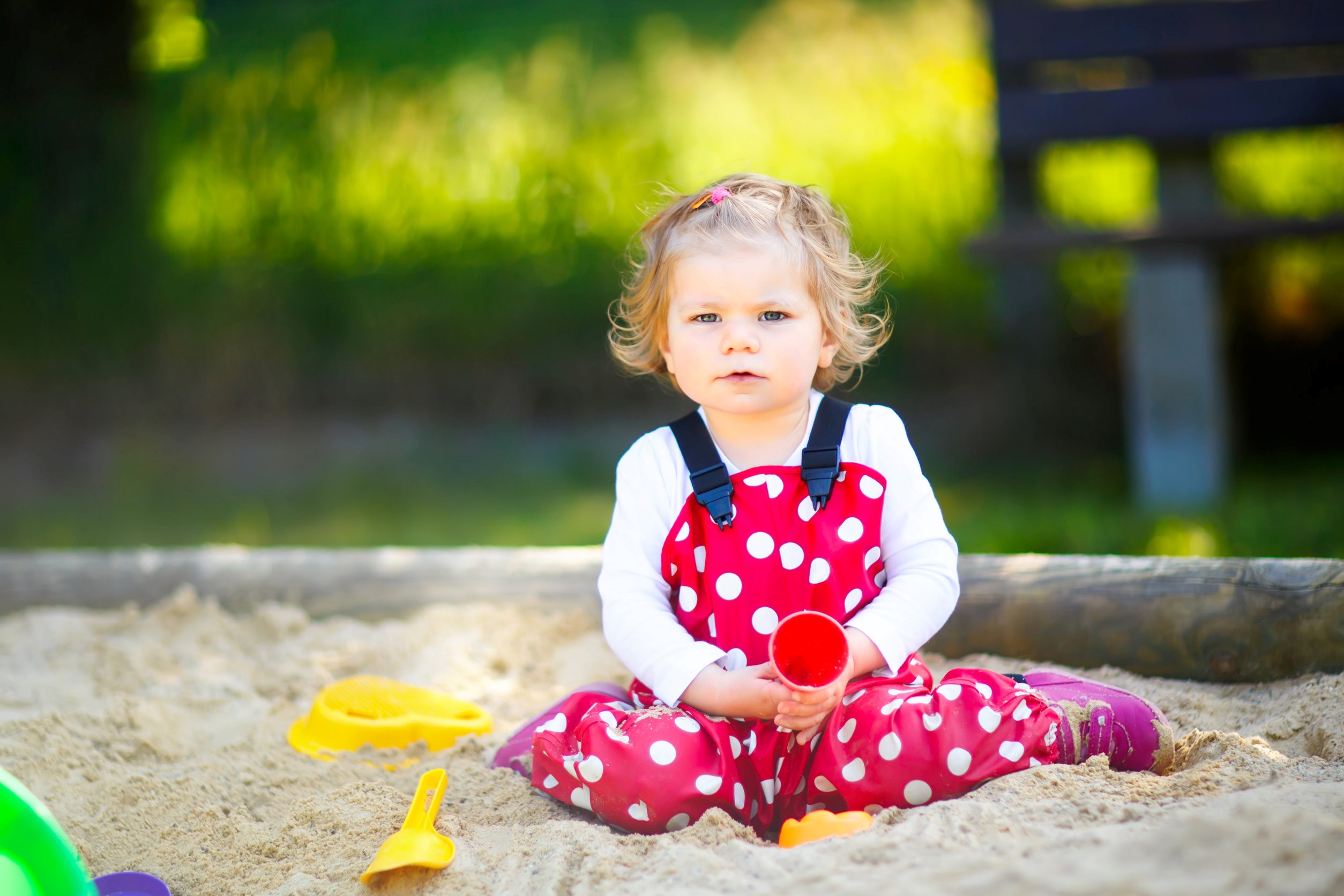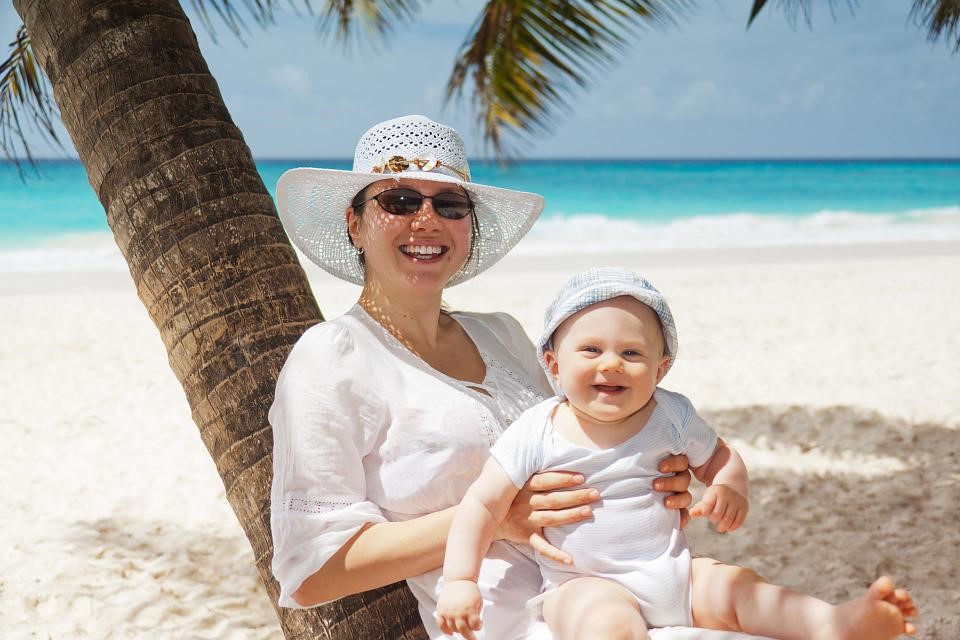Beach trips are one of the best ways to spend time with your family, but extra precautions need to be taken while bringing a baby along. Babies are especially vulnerable to sunburns, hypothermia, and infections during the trip. A little mindfulness goes a long way towards guaranteeing their safety, but when can you take a baby to the beach?
You can bring babies to the beach as early as the two-month mark, but they wouldn’t be able to swim safely due to the potential of them picking up waterborne illnesses. They can safely go for a dip after reaching six months old, but you need to be wary of the water’s temperature. Baby bodies are bad at thermoregulation and run the risk of overheating from the sun or getting chilled from exposure to cold water.
Before taking your baby to the beach, be sure to “practice” at home to get them used to interacting with sand and water. Lastly, no matter the age, make sure your baby is kept under constant adult supervision throughout the entirety of your trip.
Babies start with very weak immune systems, but these improve drastically very early on. We’ve included three notable breakpoints for you to take note of down below.
What Age Can I Take My Baby to The Beach? (Age Brackets)
0-2 Months
This early on, beach trips are off the table. They won’t work due to your infant’s extremely volatile immune system. No amount of disinfection can safely mitigate the risk of illness even for relatively short stays on the beach. We strongly urge you to wait and let your child’s immune system mature up to at least the two-month mark.
2-6 Months
Once you’ve broken the two-month barrier, your infant is now safe to take along for beach trips. They’ll likely spend most of that trip snoring in their parent’s arms, but you do have the option now. You’re still limited in what you can do with them – they’ll mostly be confined to the shade, and are still quite vulnerable to sickness from bacteria in the water.
Babies remain confined to the shade because they lack melanin, which is a pigment that protects people from sun damage. Babies have so little melanin that letting them wander under the sun will likely end with them developing painful sunburns. They also can’t regulate their body temperatures very well, so even if direct exposure wasn’t a concern babies would still be at a much higher risk of getting heatstroke then adults.
Private beaches have a little more leeway here, and you can swim with your infant – briefly, we stress – provided you take the necessary precautions to ensure their safety. Those safety measures will vary depending on your baby’s sensitivities and might be a bit tedious to accomplish.
We still wouldn’t recommend doing so given the risks. If you’re adamant about having your baby swim before the six-month mark, be sure to consult your doctor first.
6 Months and Beyond
By this point, your child’s immune system has developed enough to handle most common waterborne infections. It’s much safer to bring your baby to the beach now, but they’re still rather lacking when it comes to thermal self-regulation: babies can gain and lose heat much quicker than adults. Feel free to play with them in the water, but be prepared to get them out quickly if they show any signs of discomfort, trembling, or exhaustion.
Mind the Weather, Temperature, and Time
While the different age brackets have varied vulnerabilities to these conditions, these three elements need to be considered for the beach trip regardless of the child’s age.
Weather
The ideal beach weather for babies is cool and overcast. Sunny days tend to have the most ultraviolet radiation, posing a huge health hazard for infants. Even keeping them under an umbrella isn’t guaranteed to be safe, as UV rays can go straight through thin fabric with ease.
Make sure that infant is wearing sunscreen during the beach trip. Reapply every two hours at a minimum if they’re staying on the beach, and every half hour if they’re swimming with you. Keep them away from direct sunlight – especially during noon hours. Infants burn and overheat quickly, so it’s always better to use too much sunscreen than too little.
On the opposite end of that spectrum, cold or windy days put them at great risk of hypothermia. Infants can lose heat up to four times faster than adults, and the most dangerous aspect of this is how subtly it happens: the bulk of an infant’s energy will be dedicated to staying warm, and they’ll be unlikely to cry out to get your attention. Bundle them up in comfortable, windbreaking fabric, and periodically check them for any signs of shivering.
Temperature
As we’ve said earlier, babies have poor thermoregulation capabilities. They should never be left unsupervised even for short periods of time.
This is especially problematic when they’re swimming. Water absorbs heat much more effectively than air, and how much heat ends up siphoned raises proportionally with how much of the swimmer’s body is uncovered.
Long exposure cycles to cold water result in compromised strength and muscle coordination as blood flow begins to increase towards the body’s center. In extreme cases, it can even put their hands, feet, and other extremities at risk.
For this reason, we’d recommend splurging on either a wetsuit or thermal swimwear for infants. These provide not only insulation but even UV ray protection. They’d also look awesome to boot!
While there are plenty of options in the market, we’d recommend picking out the Aquajoy Warmsy. It’s great for infants with sensitive skin, as its design and material composition help prevent skin cream and sunscreen alike from being washed away. The Warmsy is even reversible, which gets you two great designs for the price of one swimsuit!
Time
The hard part about timing your trip is syncing it with your infant’s sleep schedule. You want to avoid afternoon outings if they can be helped – the sun will be blistering at that point, not to mention the afternoon is when beach crowds peak. Specifically, the sun is harshest between 10 AM and 4 PM, so never plan trips around that window of time.
Try to take your beach trips before lunch. Doing it this early helps beat the rush and the morning heat. 7 AM to 8 AM is an ideal time window to leave for the beach, and you could schedule your return trip at around 10 AM. Alternatively, you could bring them along for late trips past 4 PM, but they might be fast asleep the whole time – infants need upwards of 15 hours of rest, after all.
Work your beach trip into your infant’s sleep schedule rather than vice versa. The short-term convenience in planning won’t be worth the difficulty of dealing with a cranky, sleep-deprived baby out in public.
“Practice” At Home
Your baby might be overwhelmed when they arrive at the beach. There are all sorts of sounds, shapes, and other stimuli they may not be used to – it could easily catch them off guard, and they might respond to that in unpredictable ways.
While you can’t recreate the crowds or the sweltering heat, you can ease them into the beach experience with a few quick activities.
Buy a sandbox for them to play with at home, along with a few toys. This’ll help familiarize your baby with that sort of environment, and it even gives you a decent idea of how they’d act at the beach. Watch for any warning signs or concerning behavior here: if they start shoving sand in their mouths and refuse to let you stop them, you may want to reconsider bringing your baby on the beach trip!
You can take similar measures on the swimming side of things. Kiddie pools, bathtubs, and even big wash basins make for great practice spots for them! Make sure you use warm water for this – aim for at least 90°F to keep them comfortable. If it’s too warm for you, it’s definitely too warm for your infant.
Test how they respond to the water by pouring a bit of it on your baby’s arm. After that, gently submerge their hand in the water. Ease them into it, and if everything’s alright you can have them sit inside and splash around for a bit. Pay close attention to how they respond at every step – they’ll likely act the same way in water during your beach trip.
Make Sure Someone’s Watching Them The Entire Time
It’s easy to get distracted on the beach, and babies can cover a lot of ground very quickly. A few seconds of inattentiveness is all it takes for them to sneak away, and there are plenty of bad outcomes that can develop from this one lapse.
Try to have two or more capable adults on any beach trip involving an infant. You can rotate who takes on the caretaker role so everyone there can enjoy themselves properly.
We’d recommend having three people at a minimum – going to the beach is a social event. Taking turns watching the baby with your partner wouldn’t be any different from what you already do at home, sans the environment.
The risks are huge given their underdeveloped immune systems, frail bodies, and poor thermoregulation. If you can’t supervise them and account for all of these factors comfortably, we’d advise against bringing your child to the beach altogether. That said, managing this will can give your family a great opportunity to make some amazing memories together!
Final Thoughts
Beach trips are a great vacation idea, and it’s worth bringing your whole family along, babies included. Just be extra prudent planning your outing, as you can’t bring your baby to the beach at just any age. Try to squeeze in some practice at home before bringing them for the trip.
Pay close attention to how your baby acts while they’re out. Most importantly, don’t forget to enjoy yourselves out on the beach!
